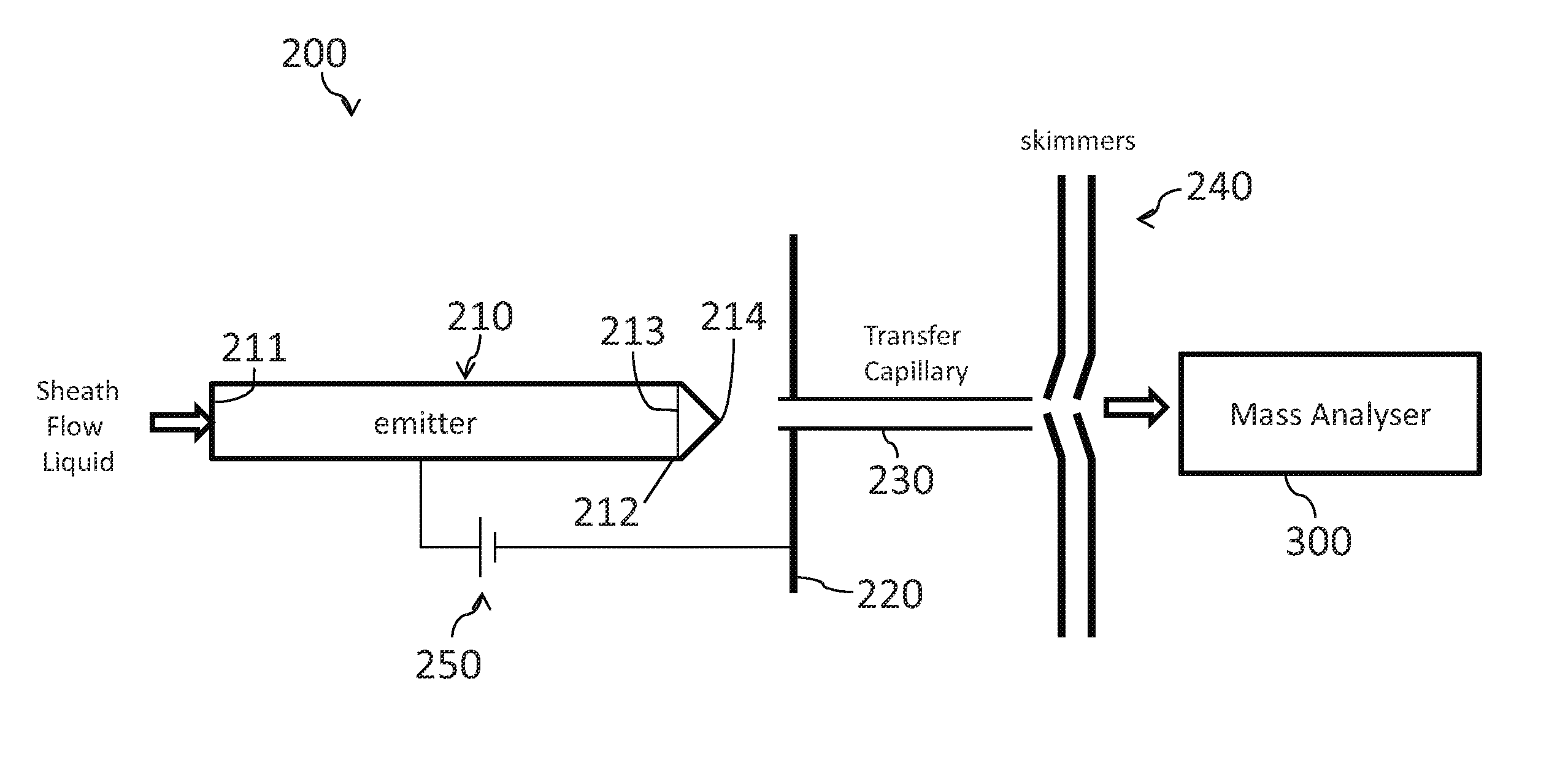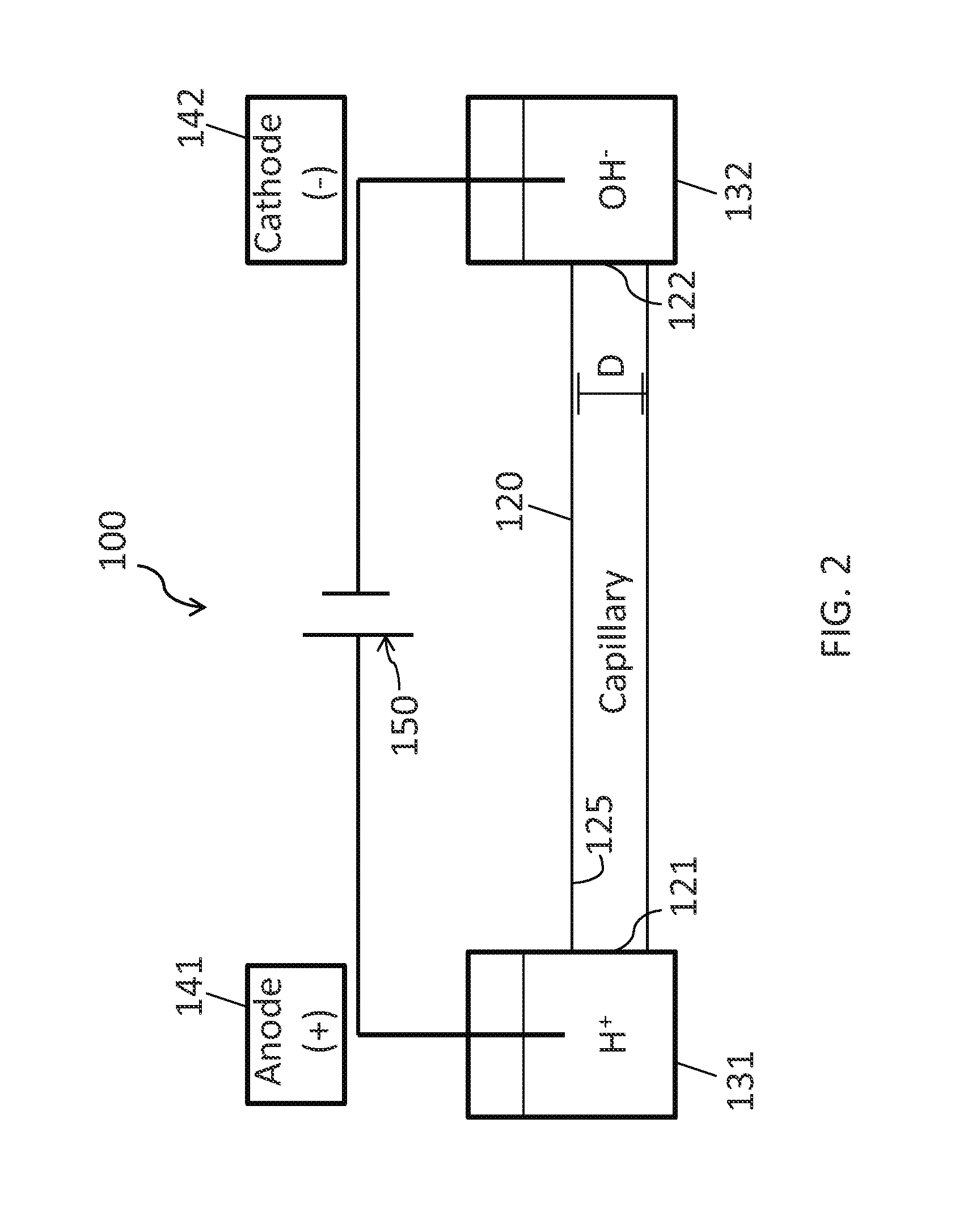Method For Analyzing Sample Components
a sample component and component technology, applied in the field of sample component analysis, can solve the problems of limiting the use of hcp characterization methods, affecting product quality and safety, and being labor-intensive and cumbersom
- Summary
- Abstract
- Description
- Claims
- Application Information
AI Technical Summary
Benefits of technology
Problems solved by technology
Method used
Image
Examples
working examples
[0108]All reagents were purchased from Sigma Aldrich Co. (St. Louis, Mo., USA) unless otherwise stated.
example 1
Preparation of BSA Digest
[0109]A Bovine Serum Albumin (BSA) digest (0.1 mg / mL) was used to evaluate the reproducibility of the cIEF-ESI-MS / MS system. BSA (0.5 mg / mL) was dissolved in 100 mM ammonium bicarbonate (pH 8.0) and denatured at 90° C. for 10 minutes, followed by standard reduction and alkylation process by reduction with dithiothreitol (DTT) (8 mM) at 65° C. for 1 h and alkylation with iodoacetic acid (IAA) (20 mM) at room temperature for 30 min in the dark. Digestion was performed by incubating the proteins for 12 hours at 37° C. with trypsin at a trypsin:protein ratio of 1:30 (w / w). Carboxyl functionalized magnetic microspheres (BioMag®Plus carboxyl, mean diameter ˜1.5 μm) were purchased from Bangs Laboratories, Inc. (Fishers, 1N, USA) and activation of carboxyl functionalized magnetic microspheres and trypsin immobilization was performed as described by Li et al., J. Chromatogr. A 2011, 1218, 2007-2011.
Preparation of a Three Protein Mixture
[0110]A three...
example 2
cIEF
[0113]The instrument used in this example was based on a capillary electrophoresis system described by Wojcik et al., Rapid Commun. Mass Spectrom. 2010, 24, 2554-2560. A commercial linear polyacrylamide (LPA) coated capillary (50 μm i.d., 150 μm o.d., 50 cm long, Polymicro Technologies, Phoenix, Ariz.) was used for the cIEF separation. The anode end of the capillary was placed in formic acid (0.1%, pH 2.5), and the cathode end was placed in 0.3% ammonium hydroxide (pH 11). The capillary was filled with sample prepared in a 0.4% Pharmalyte (3-10) solution (GE Healthcare, Piscataway, N.J.) by purging the solution through the capillary at 2 psi for 3 minutes. The injection volume employed in this experiment is equal to the capillary volume. Focusing voltage was applied at 360 V / cm for 10 minutes.
PUM
| Property | Measurement | Unit |
|---|---|---|
| focusing voltage | aaaaa | aaaaa |
| pKa | aaaaa | aaaaa |
| pKa | aaaaa | aaaaa |
Abstract
Description
Claims
Application Information
 Login to View More
Login to View More - R&D
- Intellectual Property
- Life Sciences
- Materials
- Tech Scout
- Unparalleled Data Quality
- Higher Quality Content
- 60% Fewer Hallucinations
Browse by: Latest US Patents, China's latest patents, Technical Efficacy Thesaurus, Application Domain, Technology Topic, Popular Technical Reports.
© 2025 PatSnap. All rights reserved.Legal|Privacy policy|Modern Slavery Act Transparency Statement|Sitemap|About US| Contact US: help@patsnap.com



